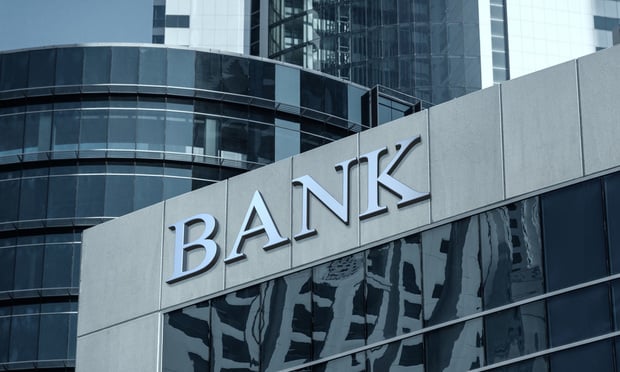WASHINGTON, DC--In the worst of economic times, Fannie Mae and Freddie Mac would need a major infusion of capital from the US Treasury Department. That is the conclusion of the Federal Housing Finance Agency's latest stress test of the GSEs, an annual requirement of the Dodd-Frank Act.
Under the worse case scenario, Fannie Mae and Freddie Mac combined could require anywhere from a $49.2 billion to $125.8 billion capital infusion, depending on the treatments of the deferred tax assets. Compared to last year's results, the GSEs' position have improved. In the 2015 stress tests, the capital infusion estimated ranged between $68.6 billion to $157.3 billion.
Real Life is Better
In real life--that is, our current economic environment--the GSEs are still sending their dividend payments to the US Treasury, even though their profit margins are being eroded by low interest rates.
For the second quarter of 2016, Freddie Mac reported a net income of $993 million, following its net loss of $354 million the previous quarter. It will return $933 million to the US Treasury. Fannie Mae posted a net income of $2.95 billion for the second quarter, compared to $1.14 billion in the first quarter. It will send a $2.9-billion dividend payment to the Treasury.
Both GSEs reported that their business results were partially offset by market-related losses driven by interest rates.
So, that is a concern for the GSEs.
What shouldn't be a concern is the $125.8 billion infusion taxpayers would have to give the GSEs—not because that isn't a large sum, but because of the scenario under which it would be required, which is highly unrealistic by just about every economic measure and forecast.
A Dystopian Economy
The scenario, designed by the Federal Reserve, is a severe global recession. Global stock markets have gone into shock as asset prices plunge and corporate bond spreads significantly widen. The GSEs' largest counterparties have defaulted.
In the US, there is unabated misery, according to the scenario laid out by the FHFA.
US real GDP begins to decline immediately and reaches a trough in the first quarter of 2017 representing a decline of 6.25% from the pre-recession peak. The rate of unemployment increases from 5% at the beginning of the forecast horizon to a peak of 10% in the third quarter of 2017. The consumer price inflation rate increases from a starting point of about 0.25% to a peak of 1.9% in the third quarter of 2017.
Put another way, the solvency of the GSEs will be the least of our problems.
Steady gains in the US economy have resulted in net positives for the multifamily sector—will this wave continue for the foreseeable future? What's driving development and capital flows? Join us at RealShare Apartments on October 19 & 20 for impactful information from the leaders in the National multifamily space. Learn more.
WASHINGTON, DC--In the worst of economic times,
Under the worse case scenario,
Real Life is Better
In real life--that is, our current economic environment--the GSEs are still sending their dividend payments to the US Treasury, even though their profit margins are being eroded by low interest rates.
For the second quarter of 2016,
Both GSEs reported that their business results were partially offset by market-related losses driven by interest rates.
So, that is a concern for the GSEs.
What shouldn't be a concern is the $125.8 billion infusion taxpayers would have to give the GSEs—not because that isn't a large sum, but because of the scenario under which it would be required, which is highly unrealistic by just about every economic measure and forecast.
A Dystopian Economy
The scenario, designed by the Federal Reserve, is a severe global recession. Global stock markets have gone into shock as asset prices plunge and corporate bond spreads significantly widen. The GSEs' largest counterparties have defaulted.
In the US, there is unabated misery, according to the scenario laid out by the FHFA.
US real GDP begins to decline immediately and reaches a trough in the first quarter of 2017 representing a decline of 6.25% from the pre-recession peak. The rate of unemployment increases from 5% at the beginning of the forecast horizon to a peak of 10% in the third quarter of 2017. The consumer price inflation rate increases from a starting point of about 0.25% to a peak of 1.9% in the third quarter of 2017.
Put another way, the solvency of the GSEs will be the least of our problems.
Steady gains in the US economy have resulted in net positives for the multifamily sector—will this wave continue for the foreseeable future? What's driving development and capital flows? Join us at RealShare Apartments on October 19 & 20 for impactful information from the leaders in the National multifamily space. Learn more.
Want to continue reading?
Become a Free ALM Digital Reader.
Once you are an ALM Digital Member, you’ll receive:
- Breaking commercial real estate news and analysis, on-site and via our newsletters and custom alerts
- Educational webcasts, white papers, and ebooks from industry thought leaders
- Critical coverage of the property casualty insurance and financial advisory markets on our other ALM sites, PropertyCasualty360 and ThinkAdvisor
Already have an account? Sign In Now
*May exclude premium content© 2024 ALM Global, LLC, All Rights Reserved. Request academic re-use from www.copyright.com. All other uses, submit a request to [email protected]. For more information visit Asset & Logo Licensing.









